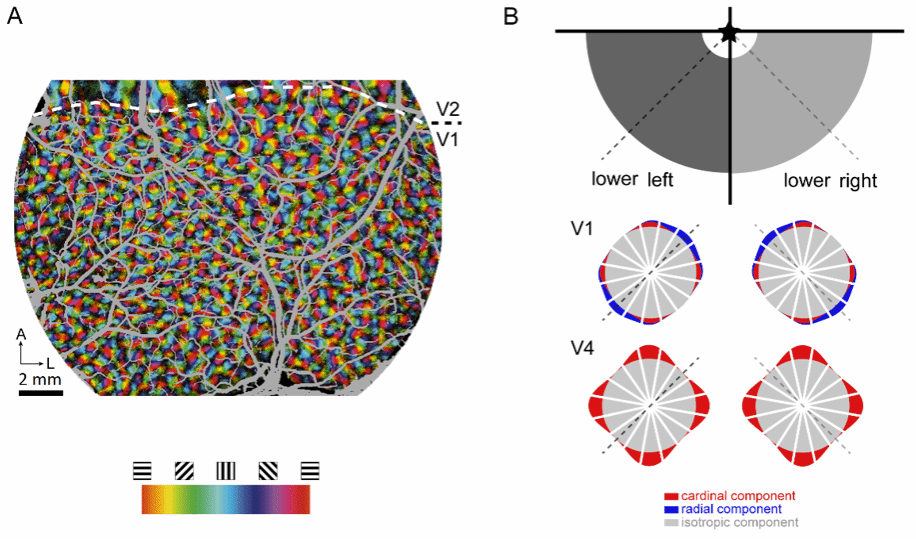
Non-uniform Orientation Representation in Visual Cortex
Orientation selectivity of visual neurons constitutes the foundation of form vision. In many mammalian species, neurons preferring cardinal (horizontal and vertical) orientations outnumber those tuned to oblique orientations - a phenomenon termed "cardinal bias." However, whether such orientation anisotropy exists in primates has remained controversial.
The research group led by Haidong Lu analyzed years of intrinsic signal optical imaging data from macaque visual cortex (Fig. A), systematically comparing orientation distributions across three key areas: V1, V2, and V4. Their investigation revealed: All three areas exhibit significant orientation anisotropy, but with distinct patterns: V1 and V2 follow a hybrid model combining "cardinal bias + radial bias," modulating uniform distribution by ~18%. V4 demonstrates pure cardinal bias with stronger modulation (26%, Fig. B). These patterns remain consistent across: both cerebral hemispheres, different visual field eccentricities, and variations in age, sex, or macaque subspecies.
This study represents the first demonstration of orientation anisotropy in primate visual cortex using intrinsic signal optical imaging. The findings not only resolve a long-standing debate in the field but also provide crucial insights into how visual cortex represents and processes environmental information (Fang et al., 2022).